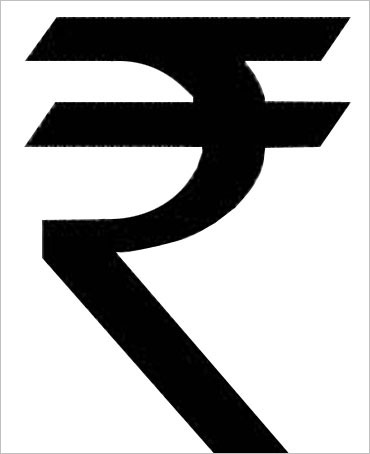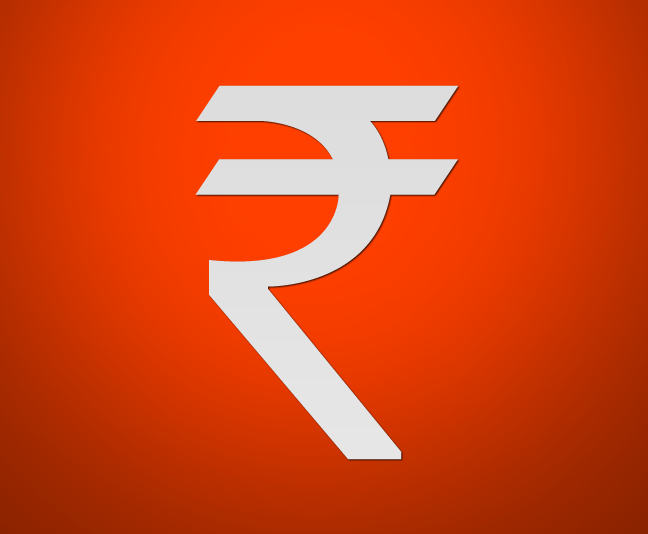
Yesterday, the Reserve Bank of India, put out an interesting set of numbers. Between November 10, 2016 and November 27, 2016, the banks reported deposits of Rs 8,11,033 crore. Over and above this, Rs 33,948 crore of exchange of notes was carried out.
The deposits and exchange became necessary in the aftermath of the Narendra Modi government deciding to demonetise notes of Rs 500 and Rs 1,000, respectively. People have time till December 30, 2016, to deposit these demonetised notes into their bank accounts or their post office accounts. Earlier a certain amount of money could also be exchanged for new notes or notes which continue to be legal tender, but that has since been stopped.
Data from the Reserve Bank of India(RBI) shows that in 2015-2016 the total amount of paper notes in circulation amounted to Rs 16.4 lakh crore. Of this, the high denomination notes of Rs 500 and Rs 1,000 amounted to Rs 14.2 lakh crore. The Rs 500 notes amounted to Rs 7.9 lakh crore whereas Rs 1,000 notes amounted to Rs 6.3 lakh crore.
Between March 2016 and November 2016, the number of Rs 500 and Rs 1,000 notes would have gone up. Using “econometric model factoring in inter alia, real GDP growth prospects, rate of inflation and denomination-wise disposal rate of soiled notes,” the RBI places orders for new notes every year. But given that we don’t have exact numbers for the number of Rs 500 and Rs 1,000 notes printed between April 2016 and November 8, 2016, when these notes were demonetised, it is best to stick to the March end numbers.
Hence, Rs 500 and Rs 1,000 notes, forming 86 per cent of the total currency by value have been demonetised. Against the Rs 14.2 lakh crore worth notes that were demonetised, Rs 2,16,617 crore has made it back into the financial system between November 10, 2016 and November 27, 2016. People have withdrawn this money from their bank accounts as well as ATMs.
What this means that withdrawals of Rs 2,16,617 crore from banks and ATMs have replaced the Rs 14.2 lakh crore of currency that has been rendered useless due to demonetisation. Of course, some portion of the currency that has been demonetised may have been hoarded in the form of black money.
The estimates of this black money in the form of cash that I have seen, vary anywhere from 6-20 per cent. Hence, even at the upper end of 20 per cent, more than Rs 11 lakh crore of currency (Rs 11.36 lakh crore to be very precise. Rs 14.2 lakh crore minus 20 per cent of Rs 14.2 lakh crore) was out there in the economy, helping people carry out transactions.
Hence, around 19.1 per cent, or a little under one fifth, of the demonetised currency which was in circulation, has been replaced. This best explains why transactions across markets in the country have collapsed. People just don’t have enough currency going around.
It is easy to ask that why are they not moving towards wallets and netbanking. The point is that more than 80 per cent of the transactions in India by value are still carried in cash and that number cannot disappear overnight. This is an economic reality and needs to be taken into account in the political decision making process.
Assurances have been made about banks having enough new notes, both by politicians as well as the RBI. But that as we all know by now is really not true. The reason for that is straightforward. There aren’t enough new Rs 500 notes going around simply because they haven’t been printed. Some basic maths tells us that it will take at least another five to six months to print enough new Rs 500 notes and get them out there.
I had first discussed this issue in the November 25, 2016, edition of The Vivek Kaul Letter. But given the importance of this issue, the whole point is worth repeating here.
The question is why is the rate of currency replacement been so slow? The simple explanation for this lies in the fact that the government hasn’t printed enough new notes to replace the old ones. There is only so much printing capacity going around at the printing presses of the government.
In total, around 1571 crore 500 rupee notes have become useless due to the demonetisation. Media reports suggest that the capacity of the government is to churn out around 300 crore notes per month. It is interesting to see how they have arrived at this number. In the last three years, the printing presses have supplied around 2200 crore notes a year, on an average. This number can be arrived at by looking at data in the RBI annual report.
A Mint newsreport points out that the total capacity of the printing presses is around 2400 crore notes per year. This is achieved by running two shifts. Adding a third shift can increase production by 50 per cent to 3600 crore notes per year. This essentially means a production of 300 crore notes per month.
What if we work with the supply number of 2200 notes per year? A third shift would lead to a jump of 50 per cent to 3300 crore notes per year. This would mean a production of 275 crore notes per month.
To get back to the point, around 1571 crore 500 rupee notes need to be exchanged. At 300 crore notes per month, this will take around 5.2 months to print, the new Rs 500 notes to replace the old ones. At 275 crore per month, it will take around 5.7 months.
So, just to replace Rs 500 notes can take a period of up to five months. Over and above this, there is the Rs 1,000 note that also needs to be replaced. In total, around 633 crore, 1000 rupee notes have become useless due to the demonetisation.
Assuming the new Rs 2,000 notes directly replace the Rs 1,000 note, then that would mean printing 316.5 crore new notes of Rs 2,000 (633 crore divided by 2). At the rate of 275 crore or 300 crore notes a month, this would mean a little over a month. If all the currency is printed, it will take a little over six months to print it.
Also, we can clearly see that the problem is with the Rs 500 note and not the Rs 2,000 note. Further, media reports suggest that most of Rs 2,000 notes that need to be printed have already been printed. There are a reasonable number of Rs 2,000 notes going around but they are of no use because nobody has enough change to return. They become useful only if a purchase of more than Rs 1,500 is to be made. Only then is it possible to get change from the merchants.
Of course, all this currency may not have to be printed given that all of it may not make it the banks, given that some of it is black money held in the form of cash. And some people may prefer letting their money become useless pieces of paper than generate an audit trail for the bank. That part of the detail will come clear only after December 30, 2016, the last date for depositing old notes to banks.
Current assumptions on black money held in the form of notes are in the range of 6-20 per cent. If, the total amount of black money held in the form notes is 20 per cent, then at least one-fifth of the demonetised notes will not make it to the banks. This would mean around a month less of printing new notes.
This one month less of printing new notes is nullified by the fact that we are considering Rs 500 notes in existence only until March 31, 2016. In 2016-2017, the RBI had asked the printing presses to print 572.5 crore of old Rs 500 notes to be printed, during the course of the year.
Assuming that half of the lot has already been printed, it would mean that close to 300 crore old Rs 500 notes would have been printed during the course of this financial year. These notes are over and above the 1,571 crore Rs 500 notes in existence as on March 31, 2016. They will also have to be replaced by the new Rs 500 notes and this would mean an extra one month of work, given the printing capacity of 300 crore notes per month. This would in effect neutralise the impact of around 20 per cent of the old Rs 500 notes not making it back to banks or post offices.
Taking these factors into account, it is likely to take at least five months for the situation to get back to normal, when there will be enough new notes going around in the financial system. And this with the assumption that all Rs 1,000 notes are replaced by Rs 2,000 notes.
If that is not the case, and Rs 500 notes also replace Rs 1,000 notes, then it will take even longer. Of course, all this comes with the assumption that during this period the low denomination notes of Rs 10, Rs 50 and Rs 100 are not printed at all. I don’t know how feasible that is.
Also, we are assuming here that the government printing presses are working full steam here. Now that as well know is an unrealistic assumption. A report in the Quint points out that only 1 crore Rs 500 notes have been printed up until now. That is less than 0.1 per cent of the total number of Rs 500 notes that need to be printed. Further, I don’t know whether the government printing presses are in a positon to run a third shift.
Other than printing the new notes, they should also reach the different parts of the country, quickly enough.
To cut a long story short, this mess will take some time to sort out.
(The column originally appeared on November 29,2016, on Vivek Kaul’s Diary)




